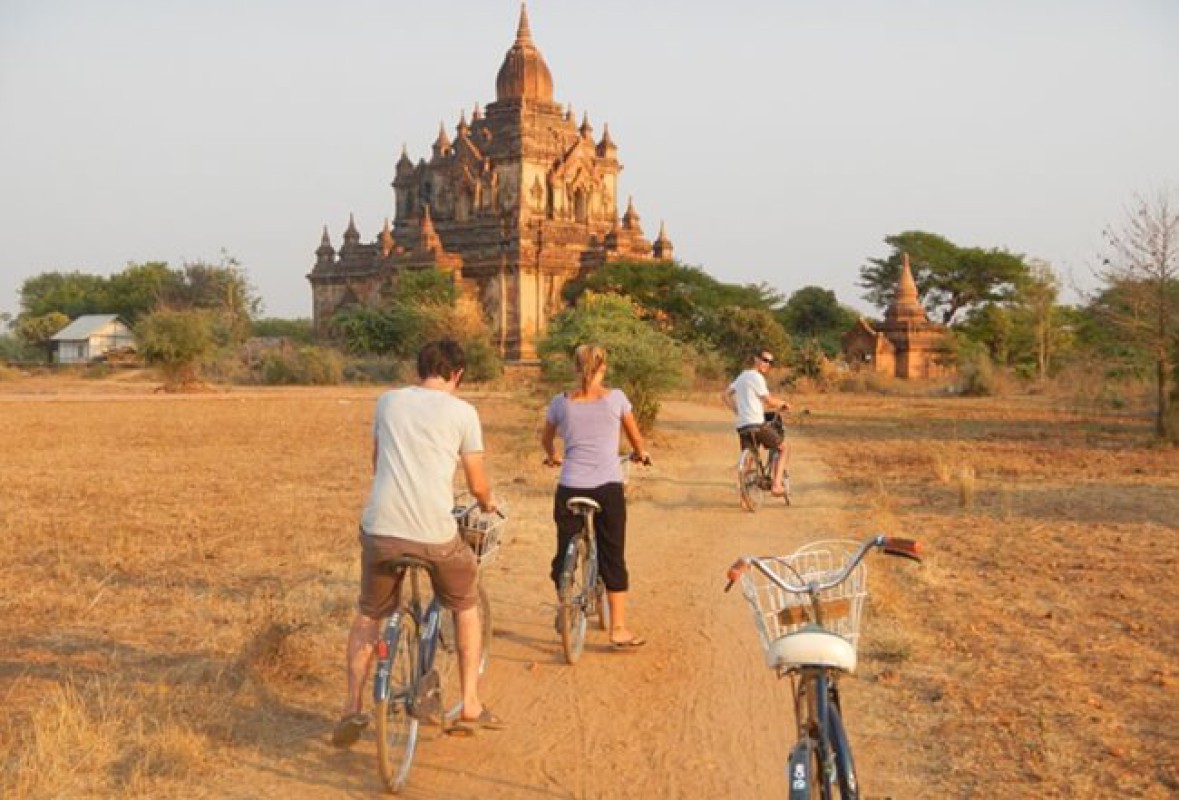The Heartbeat of Myanmar’s Cultural and Historical Legacy

573

By Hsu (NP News)- March 13
Nestled along the Ayeyarwady River in central Myanmar, Mandalay stands as a testament to the country’s rich history, vibrant culture, and enduring spirit. As the last royal capital of the Burmese kingdom before British colonization, Mandalay is more than just a city—it is a living museum of Myanmar’s past and a gateway to its future. For travelers and history enthusiasts alike, Mandalay offers a captivating blend of ancient traditions, stunning landmarks, and a unique culinary heritage that beckons the international community to explore its wonders.
A Historical Jewel
Mandalay’s history is deeply intertwined with Myanmar’s royal legacy. Founded in 1857 by King Mindon, the city was envisioned as a spiritual and cultural hub. It served as the seat of the Konbaung Dynasty, the last Burmese monarchy, until the British annexation in 1885. The city’s name, derived from the nearby Mandalay Hill, is said to have been inspired by a prophecy about the founding of a metropolis at the foot of the sacred hill. Today, Mandalay remains a symbol of national pride, preserving the traditions and stories of a bygone era.
Landmarks That Tell Stories
Mandalay is home to some of Myanmar’s most iconic landmarks. At the heart of the city lies the Mandalay Palace, a sprawling complex surrounded by a moat and towering walls. Though the original wooden structures were destroyed during World War II, the meticulously reconstructed palace offers a glimpse into the opulence of Burmese royalty.
Just a short distance from the palace is the Kuthodaw Pagoda, often referred to as the “World’s Largest Book.” Its 729 marble slabs, inscribed with Buddhist scriptures, are a UNESCO-recognized treasure. Nearby, the Shwenandaw Monastery, crafted entirely from teak wood, showcases exquisite carvings and serves as a reminder of Mandalay’s artistic heritage.
No visit to Mandalay is complete without ascending Mandalay Hill, a pilgrimage site that offers panoramic views of the city and its surroundings. The hill is dotted with pagodas and monasteries, each with its own story to tell. At sunset, the golden spires of the city’s pagodas glow in the fading light, creating a scene of unparalleled beauty.
A Culinary Adventure
Mandalay’s cuisine is a reflection of its diverse cultural influences. The city’s food scene is a delightful mix of traditional Burmese flavors and regional specialties. One must-try dish is Mandalay Mont Lin Ma Yar, a savory pancake made with rice flour, chickpeas, and quail eggs, often enjoyed as a street food snack. Another local favorite is Shan noodles, a dish influenced by the neighboring Shan State, featuring rice noodles in a flavorful broth topped with marinated pork or chicken.
For those with a sweet tooth, Htou mont (steamed layered cake) and Sanwin makin (semolina cake) are popular desserts that showcase the city’s culinary creativity. Mandalay’s bustling markets, such as Zegyo Market, are perfect for sampling these delicacies and experiencing the city’s vibrant street food culture.
A Tapestry of Culture and Tradition
Mandalay is not just a city of historical significance; it is also a cultural powerhouse. The city is a center for traditional arts, including marionette theater, gold leaf making, and stone carving. Visitors can witness artisans at work, creating intricate pieces that have been passed down through generations. The Mandalay Marionette Theater offers performances that bring Burmese folklore to life, while workshops in nearby villages provide a hands-on experience of these ancient crafts.
Religion plays a central role in Mandalay’s sociocultural fabric. The city is home to countless monasteries and pagodas, each serving as a hub for spiritual practice and community gatherings.
Geographic Splendor
Mandalay’s geographic location makes it a strategic and scenic destination. Situated on the eastern bank of the Irrawaddy River, the city is surrounded by fertile plains and rolling hills. The river itself is a lifeline for the region, supporting agriculture, trade, and transportation. A boat ride along the Irrawaddy offers a serene way to experience the landscape and observe rural life along its banks.
To the north of Mandalay lies the ancient city of Inwa (Ava), a former capital with ruins that tell stories of Myanmar’s medieval past. To the south, the U Bein Bridge in Amarapura stretches across Taungthaman Lake, providing a picturesque setting for sunset views and a glimpse into local life.
A Call to Explore
Mandalay is more than a destination; it is an experience that invites visitors to immerse themselves in Myanmar’s history, culture, and natural beauty. From its majestic pagodas and royal palaces to its bustling markets and serene riverbanks, the city offers a journey through time and tradition.
For the international community, Mandalay represents an opportunity to connect with a nation that has long been shrouded in mystery. As Myanmar continues to open its doors to the world, Mandalay stands ready to welcome travelers with its warmth, charm, and timeless allure. Whether you are a history buff, a foodie, or a culture enthusiast, Mandalay promises an unforgettable adventure that will leave you yearning for more.
So pack your bags, and let Mandalay’s stories unfold before you—one pagoda, one dish, and one smile at a time.
References:
• "The River of Lost Footsteps: Histories of Burma" by Thant Myint-U
• UNESCO World Heritage Centre (for information on Kuthodaw Pagoda and other cultural sites)
• Myanmar Ministry of Hotels and Tourism (official tourism website)
• BBC Travel and National Geographic articles on Myanmar and Mandalay
• Encyclopaedia Britannica (for geographic and historical overviews)